A new way to look at questions and engagement: emotionally
When you’re asking an existing or prospective customer a question, the object is to get them to think and respond emotionally.
To most salespeople this strategy sounds like a foreign language.
START YOUR THINKING HERE: The sale is made emotionally and justified logically. Once you understand that fact, it makes perfect sense to engage the customer emotionally to set the tone for them to decide to buy.
Most salespeople are taught the difference between open-ended and closed-ended questions. A closed-ended question is one that results in a yes or no answer. An open-ended question is one that begins to create dialogue from the customer. Open-ended questions are good, but they don’t necessarily breed emotion. This process is necessary to understand, but at its core is passé.
Here’s a new way of thinking about your questioning strategy: logic-based questions vs. emotion-based questions.
This thought process and strategy will give you a new awakening about how customers think and decide. And by using emotion-based questions, you can get them to decide on you.
CAUTION and CHALLENGE: This is insight to a new questioning process that will help you formulate emotionally engaging questions. I’ll give you phrases to use, and a few sample questions. Your job is to understand the process and create your own questions based on your product, service, customer needs, and customer’s desired outcome. Questions that draw out their emotion, and keep focus away from logic – AKA price.
Logic-based questions center around the old-world ‘qualifying’ questions. These are questions that both annoy and aggravate the customer. Logic-based questions basically ask for money information so the salesperson can begin to salivate. “What’s your present payment?” or “What have you paid in the past?” or “What’s your budget?” or “Do you want to lease or buy?” These are questions fall under the category of ‘none of your business.’
KEY CONCEPT: Do not qualify the buyer, let them qualify themselves because you’re so friendly, engaging, and genuinely interested.
The late, great Dale Carnegie said, “You can make more friends in two months by becoming really interested in other people, than you can in two years by trying to get other people interested in you.”
Emotion-based questions ask about their life and use, not their money. Prior to beginning your ‘presentation,’ ask the customer emotion-based questions that begin with the words, “How long have you been thinking about…” or “What were you hoping for…”
Get the customer to paint their vision of outcome.
Get the customer to paint their picture of ‘after they buy.’
During the purchase, ask emotion-based questions such as, “Is this what you had in mind?” or “How do you see this serving your purpose?” or “How do you see your family enjoying this?” Or take it even deeper with, “What do you think Bobby will say when he sees this?”
Emotion-based questions draw out feelings – feelings that will lead to true engagement and honest answers about how your product or service will affect their expected outcome.
When you can get the customer to visualize outcome, you also have them visualizing ownership – otherwise known to you as ‘purchase.’
MAJOR POINT OF UNDERSTANDING: People don’t actually come to purchase. They come to purchase because they want to USE. What happens AFTER the purchase is way more important to the customer than the actual purchasing process. Drawing out their emotion during the process is the key to getting them to take ownership.
So, during the sales presentation you might want to ask questions that begin with phrases like, “What are you hoping to achieve?” or “How will you use this in your business?” or “How do you envision this will add to your productivity?” or “How do you believe this will affect your profit?”
Whether you are selling to a consumer or a business, whether you are selling on the phone or face-to-face, the process and the emotional involvement are the same. Someone wants to take ownership, and your job is to get them to visualize it, be engaged by you, agree with you, believe you, have confidence in you, trust you, accept your price, and pull the trigger.
The key to this is emotional involvement. No manipulation, no pressure, no old world sales techniques, no NLP, just friendly and genuine emotional engagement that touches the heart and the mind simultaneously.
“Jeffrey, I’ve been taught to ‘find the pain.’ Is that emotional?” Yes, but in a negative way. A very negative way. Pain is a negative emotion – or as I call it, a ‘none-of-your-business emotion.’ Dumb questions like, “What keeps you up at night?” create an uneasy, uncomfortable atmosphere between you and the customer. And most of the time, if you’re asking a negative-based question the customer will not give you a real answer.
AHA! Don’t find the pain. Find the pleasure.
Pleasure evokes positive emotion. “Tell me about your vacation.” “How is Morgan following your passion for fashion?” “How is Henry following your passion for golf?” “Where was your biking trip this year?”
Find their pleasure, find their purpose, find their expected outcome, uncover their true emotional motives – and you will find their wallet.
Now that’s pleasure.
Reprinted with permission from Jeffrey H. Gitomer and Buy Gitomer.
About the Author


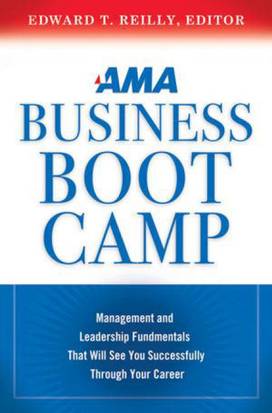
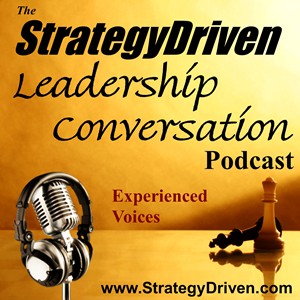 StrategyDriven Leadership Conversations focus on the values and behaviors characteristic of highly effective leaders. Complimenting the StrategyDriven Management & Leadership articles, these conversations examine the real world challenges managers face every day that are not easily solved with a new or redesigned process and instead demand the application of soft leadership skills to achieve a positive outcome.
StrategyDriven Leadership Conversations focus on the values and behaviors characteristic of highly effective leaders. Complimenting the StrategyDriven Management & Leadership articles, these conversations examine the real world challenges managers face every day that are not easily solved with a new or redesigned process and instead demand the application of soft leadership skills to achieve a positive outcome.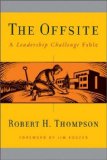
 Robert Thompson, author of
Robert Thompson, author of 
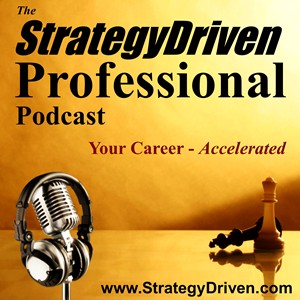 StrategyDriven Professional Podcasts focus on the tools and techniques business professionals can use to accelerate their careers and personal goals achievement. These podcasts elaborate on the principle, best practice, and warning flag articles found on the StrategyDriven Professional website.
StrategyDriven Professional Podcasts focus on the tools and techniques business professionals can use to accelerate their careers and personal goals achievement. These podcasts elaborate on the principle, best practice, and warning flag articles found on the StrategyDriven Professional website.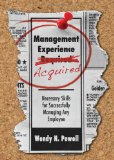
 Wendy Powell is the author of
Wendy Powell is the author of